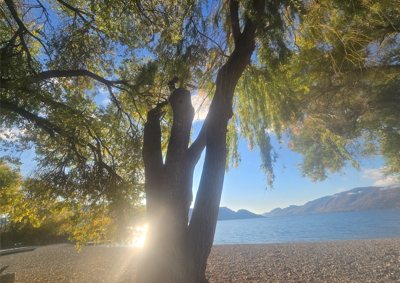Two ÎÚŃ»´«Ă˝ streets are being eyed for more trees, more sidewalks, and an alternate way of managing stormwater runoff.Ěý
City council this week approved staffÎÚŃ»´«Ă˝ plan to apply for $224,000 from a $291 million federal initiative to support the planting of 1.2 million trees across Canada.Ěý
The Trudeau government says the program is aimed at supporting “nature-based climate solutions which will achieve significant carbon sequestration and increase forest and community resilience to climate change’, per a report on the program.
ÎÚŃ»´«Ă˝ÎÚŃ»´«Ă˝ submission will ask for funding to plant more trees on Glenwood Avenue, refresh its boulevards, and add sidewalks. On Morrison Avenue, the city plans to add bioswales, strips of vegetation along the road that will absorb stormwater and help irrigate low-water trees and ground cover.Ěý
Currently, those two streets have “low tree equity”, council heard from city grants Kirby March. A total of 56 new trees would be planted on the two streets.Ěý
“I just want to congratulate staff for identifying this program and going after it,” said Coun. Gord Lovegrove. “I look forward to the outcome and the lessons we can learn from it to build our tree canopy.”
A 2022 Statistics Canada report that said ÎÚŃ»´«Ă˝ had lost a quarter of its green space in the previous 20 years was said by city officials to have painted a misleading picture of the effects of urban development.Ěý
Significant natural factors - such as devastating wildfires, drought, insect infestation and even seasonal changes in the Okanagan landscape - were not properly accounted for in the survey, municipal officials said. For example, the survey did not even account for the massive 2003 Okanagan Mountain Park fire, a 25,000 ha. blaze which spread into many of ÎÚŃ»´«Ă˝ÎÚŃ»´«Ă˝ southern areas. On its own, that fire accounted for almost half the green space said by StatsCan to have been “lost” in ÎÚŃ»´«Ă˝ in the 20-year-period.Ěý
The study also focused only on downtown, Rutland, GlenmoreĚýĚýand Mission, excluding the sprawling South East ÎÚŃ»´«Ă˝ region, made up mostly of farmland. If it had been, ÎÚŃ»´«Ă˝ÎÚŃ»´«Ă˝ percentage of “lost” green space would have been much less than the stated 25 per cent.Ěý
In fact, the city says, ÎÚŃ»´«Ă˝ÎÚŃ»´«Ă˝ urban tree canopy - a measure of how much land is shaded by trees - has actually increased from 16 per cent to 23 per cent, city officials said in 2022.

